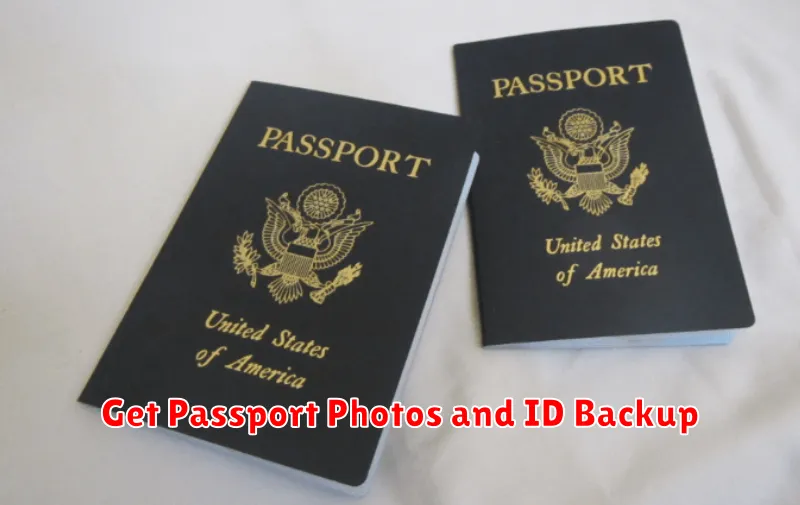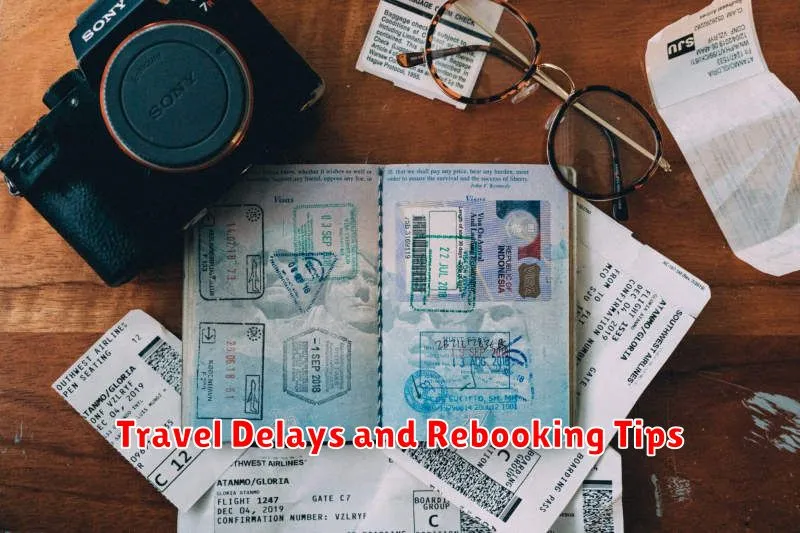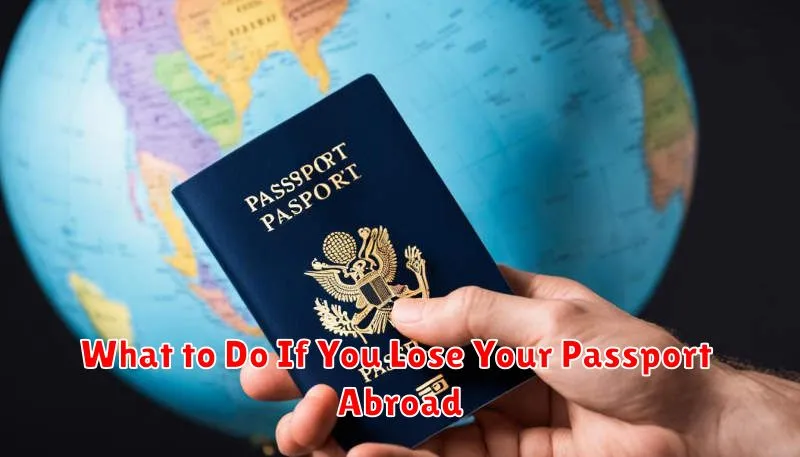Losing your passport abroad can be a stressful and disorienting experience. It’s a crucial document that proves your citizenship and allows you to travel internationally. If you find yourself in this unfortunate situation, it’s essential to take swift and decisive action. This article outlines the necessary steps to take if you lose your passport abroad, offering guidance to help you navigate this challenging predicament and return home safely.
From contacting the nearest embassy or consulate to obtaining an emergency passport, understanding the process is key to minimizing disruption to your travels. We’ll cover everything you need to know about what to do if you lose your passport abroad, including the required documentation, potential costs, and tips for preventing passport loss in the future. Don’t panic; this guide will provide you with the information you need to resolve the situation effectively.
Stay Calm and Don’t Panic
Losing your passport in a foreign country can be a stressful experience, but it’s crucial to remain calm. Panicking will only cloud your judgment and make the situation more difficult to navigate. Take a deep breath and remind yourself that this is a solvable problem.
The first step is to ensure your immediate safety. Find a safe place to collect your thoughts and assess the situation. Do you have any copies of your passport or other forms of identification with you? Where are you staying? Knowing these details will be helpful as you begin the process of replacing your lost passport.
Locate the Nearest Embassy
One of the most critical steps after losing your passport is to contact your country’s nearest embassy or consulate. Embassy staff can provide essential assistance in navigating this difficult situation.
They can help you with the following:
- Issuing an emergency passport
- Providing assistance with local authorities
- Connecting you with resources for financial assistance, if needed
- Offering general advice and support
Be prepared to provide as much information as possible, including your name, date of birth, place of birth, passport number (if you remember it), and details of how you lost your passport. Cooperation with embassy officials is vital for a smooth resolution.
Report to Local Authorities

After ensuring your safety, the next crucial step is reporting your lost passport to the local police or other relevant authorities. This report serves as an official record of the incident and may be required for insurance claims or when applying for a replacement travel document. Obtain a copy of the police report, as you will need it later.
When filing the report, provide as much detail as possible, including:
- Your full name and date of birth
- Passport number, issue date, and place of issue
- Date and approximate location of loss or theft
- Any other relevant details surrounding the incident
Important: Keep a record of the police report number and the contact information for the police station where you filed the report.
Get Passport Photos and ID Backup

Having extra passport photos can significantly expedite the replacement process. Ideally, you should carry extra passport photos with you when traveling internationally. If you don’t have physical copies, having digital copies stored securely can be a viable alternative. Ensure these digital copies meet the requirements for passport photos, such as size and background.
In addition to passport photos, having backup copies of other forms of identification is crucial. This can include a scanned copy of your driver’s license, birth certificate, or other government-issued ID. Store these securely, separate from your physical documents. Consider using a secure cloud storage service or emailing copies to yourself.
These backups serve as important proof of identity when dealing with embassy or consulate officials. Having these readily available can significantly reduce the time and hassle involved in obtaining an emergency passport.
Filling Emergency Travel Documents
If you lose your passport abroad, you’ll need to obtain emergency travel documents to return home or continue your travels. The process typically involves contacting your nearest embassy or consulate.
Be prepared to provide proof of citizenship, such as a birth certificate or a photocopy of your lost passport, if available. You will also need to fill out forms detailing the circumstances of your passport loss and provide identification documents. Additional documentation may be required, so it’s advisable to consult your embassy’s website for specific instructions.
These emergency documents generally permit you to travel directly back to your home country. They may also be used for onward travel in specific circumstances. The embassy or consulate staff will inform you of the validity and limitations of your emergency travel document.
Travel Delays and Rebooking Tips

Travel delays resulting from a lost passport can significantly disrupt your itinerary. Immediately contact your airline or travel agent to inform them of the situation and discuss rebooking options. Airlines often have specific procedures for passengers facing such circumstances.
Be prepared for potential fees or fare differences associated with rebooking. Having travel insurance can be beneficial in mitigating these costs. Maintain thorough records of all communication and expenses incurred due to the delay.
Flexibility is key when rebooking. Consider alternative routes or dates if possible, as this may expedite your return journey. While waiting for a new passport, explore temporary accommodation options if necessary.

